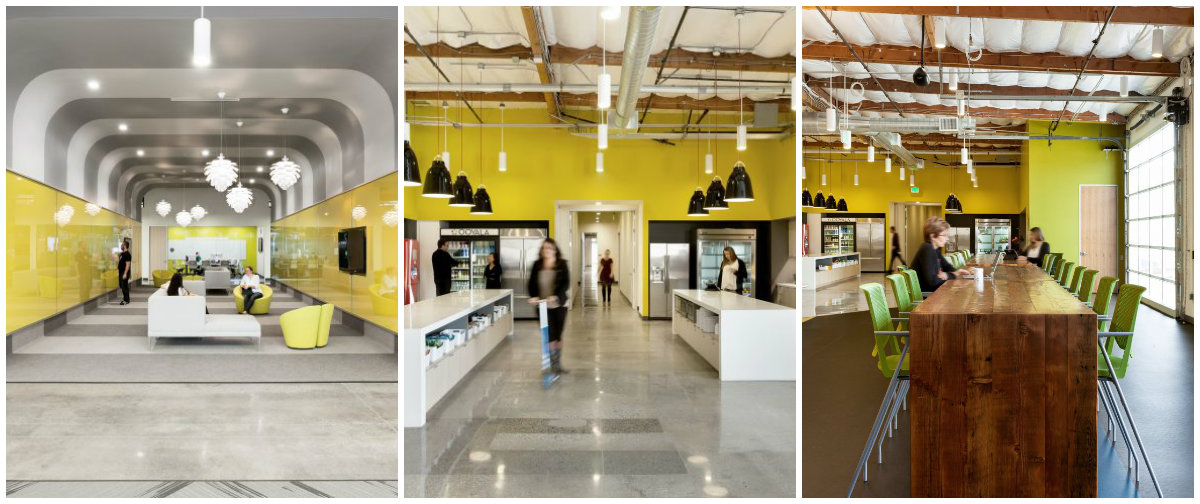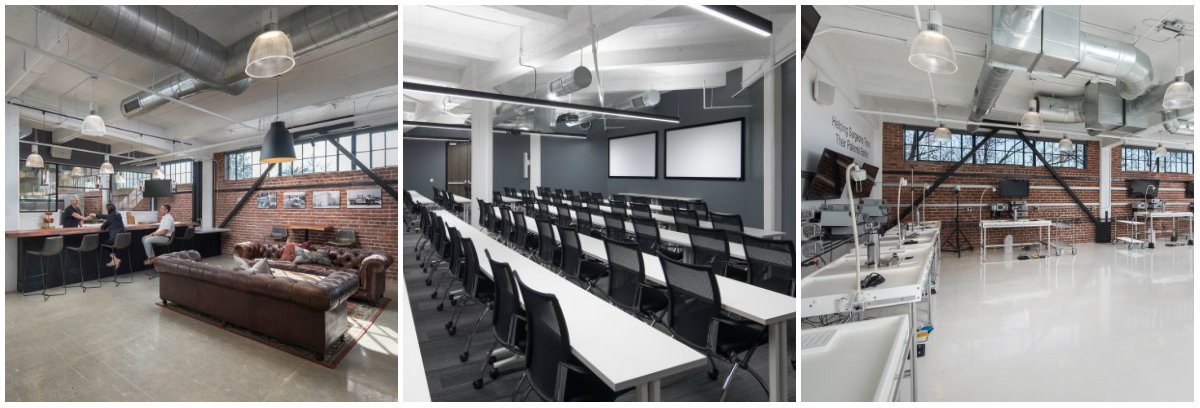Workplace: Designing The Awe-Factor
Designers today are finding inspiration in workplace design from many sources. From recent aesthetic trends, to ethnographic research that examines how people use space, to generational demographics that reflect social and lifestyle changes – every aspect plays into creating and shaping the next generation of work space. That said, the most important inspiration still comes from individual clients themselves. The most successful workplaces continue to reflect both the unique culture of a company as well as the unique makeup of its workforce.
Yet, all companies continue to grapple with the same basic issue—how to attract and retain the best talent. Employees are the backbone to creating a company’s culture; thus, there is no doubt that an aesthetic “wow” factor that inspires creativity, attracts new employees, and supports retention is crucial to a company’s success.
How do companies “live their culture,” complete with unique experiential design features that create that “awe factor” and provide special “moments” throughout an entire workplace? Inventive design solutions that reflect the personality of the company are the foundation that sets the stage. Several recent projects illustrate vibrant solutions—each specifically crafted to the individual corporate culture, designed to support a productive workforce and attract the next generation of top talent.
Putting ‘Fun’ Into the Workplace
After compiling feedback from a cross section of employees, Ooyala, a media platform provider in Santa Clara, California, discovered a challenge: to design a space that connects everyone—from engineering to marketing to the administrative departments—with amenities for a “work-play” atmosphere. The resulting design was a 25-foot collaboration tunnel inspired by a camera’s zoom lens to serve as the cornerstone of the design that connects the entire office.
Adaptable Technology for Collaboration
Spaces designed to facilitate employee retention must also ensure appropriate technology is implemented, not only for immediate needs, but in anticipation of, and adaptability for, future advancements. One such example of this is another company also housed in The Cannery – Sequoia Surgical.
The design adheres to The Cannery’s shared overall palette while integrating more polished finishes befitting a high-tech space dedicated to health-industry events, seminars, medical equipment displays, and training of healthcare professionals. The 12,000-square-foot office includes an auditorium, training room, and entertainment venue to host visiting healthcare providers. The open floor plan, clean white aesthetics, and glass-front conferences rooms fit comfortably within the industrial backdrops of brick wall, concrete columns, high ceilings, and exposed duct work.
Incorporating Health & Wellness into the Workplace
One example of how design can impact employee health and well-being while truly setting the stage for success is The Cannery, a once-underutilized office property and former fruit and vegetable cannery in the revitalized Midtown warehouse district of Sacramento. Today, it has been transformed into a full-block urban office and technology campus designed to meet the growing needs of the city’s most forward-thinking companies. As such, it has created a true gathering place that not only embraces an exciting, breathable space, it serves as a vibrant backdrop for the companies that call The Cannery home.
This urban renewal project includes tailored tenant work environments and common community areas. These carefully crafted spaces – such as The Cannery Patio and Community Park – encourage interaction and include covered tables, boccie ball, and special locations for mobile food trucks featuring farm-to-fork cuisine. The common spaces connect tenants to each other to promote idea sharing and employee well-being using open spaces essential for interaction and forming a connection to nature.
The renovation combines the building’s historic industrial character of masonry, and brick and original divided light glazing throughout, with modern office design. All of this creates a truly unique work space. Part of the design direction and strategy, created in partnership with the developer Fulcrum Property, focused on honoring the history of the property while recognizing the specific mission of each tenant within the overarching design framework of the entire property.
While The Cannery presented an opportunity to look at a full-block urban workplace experience, other companies may look at a single element to create an impact full and meaningful workplace.
Branding Beyond the Logo
Another awe factor in using design is the ability to create employee experiences through branding. In this particular example, software company Accenture’s office designs demonstrate how to create employee experiences through branding—especially creating a sense of local identity for multi-office or global companies.
Here, the company’s brand reflects a strong sense of support for employee’s well-being and engagement. The design, furnishings, and finishes of a workplace bring these qualities to life organically. A space can be beautifully designed, but unless it is infused with the company’s culture and personality, it is just another pretty room. The brand is what makes it unique and memorable.
This sense of branding inspired the design behind Accenture’s new office space. It sought to synthesize their global placement while still meeting their desire to create value and individual identity for each office. Architecture and materials are creatively used to design elements which provide a cohesive brand globally, as well as design elements relevant to each individual office’s culture and geographic location. The use of branded colors and shapes are realized in each office but have been implemented creatively based on the particular space and location, with the specific goal of employee retention.
Design Moving Forward
Companies are taking creative approaches to incorporate experiential moments in the design of their workplace. Designers are constantly adapting to these changing needs and demands of the workforce to create truly innovative spaces. Imagination and creativity are just as essential to generating these innovative designs as the employee input that drives the design decisions—input that’s crucial to understanding just what makes today’s employees healthy, happy, satisfied, and willing to invest in their company culture. In the exciting field of workplace design, creating environments that accomplish these goals continues to drive designers to pioneer and introduce ever more adaptable and innovative new solutions.





